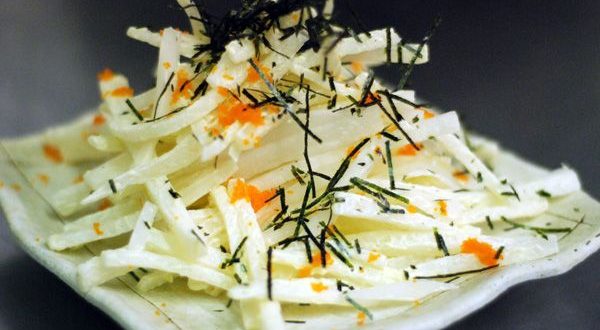Following are some dishes from Japanese cuisine that are easy to make and quite high on the nutrition scale. You might want to consider adding these to your diet.
Miso soup
All three Japanese meals include soup, and Miso soup is very nutritious, full of proteins and with little fat. A soup made from fermented soy paste. It is one of the basic staples of a Japanese diet. Dashi is a broth in which soy paste is mixed. Japanese people make it by using a variety of fish and seaweed. You can buy ready to make soup from the market, in which you get a readymade broth Dashi. If you make your own soup at home, you get an opportunity to add more vegetables and seaweeds according to your taste preference.
Hijiki No Nimono
This is an everyday Japanese dish. It is one of the healthiest Japanese foods. Hijiki is extremely nutritious seaweed, which is loaded with fiber, minerals, iron, and vitamins. A strong seasoning goes into Hijiki No Nimono, so that it lasts longer. The strong seasoning makes Hijiki good to eat with steamed rice. It is sweet and salty in taste. Japanese eat Hijiki for the sake of nutrition, but excessive consumption is not good for health.
Yakitomorokoshi (Grilled Corn)
This is a Japanese delicacy that you will find vendors selling in the streets. It is a grilled corn brushed with soy sauce. The smell of grilled soy sauce is so tempting that hardly anybody can resist the temptation of having Yakitomorokoshi. It is a perfect bend of sweetness of corn and salty flavor of soy sauce. You can cook the corn before grilling if you want to save the grilling time. Grilled corn is pure fiber and no fat.
Barazushi
Bara means scattered, and here in this dish the term implies mixture of vegetables and the sushi rice. Barazushi is like sushi, only with many vegetables added to the mix, making it something of a vegetable sushi. It is a dish, which Japanese prepare at home and quite a few restaurants serve this dish. Barazushi is a festival dish for the Japanese. The regional and personal preferences influence the type of vegetables one adds to this dish. Usually people add dried gourd, lotus roots, Koyadofu (dried tofu), and carrots to this vegetable sushi. If you want to add seafood, Unagi (eel) and Ikura (salmon roe) are good options.
Daikon Salad
Daikon radish, a white long radish, is very common in Japan, as Japanese people use them for everyday meals throughout the year. Daikon salad with Ponzu dressing is quite easy to make and is finger licking good. You can cook Daikon if you are using it for soup but here it will go raw in salad. Mix sesame seeds, sesame oil, sugar, vinegar, and soy sauce in a bowl. Now cut thin long slices of Daikon, and add it to the dressing in the bowl. The Daikon salad is ready and you can serve it with Katsuobushi and Nori on top.
Yudofu
Yudofu also called Yu Tofu is Tofu cooked in hot water in a pot. A simple traditional Japanese hot pot dish, it uses not just hot water but Kombu (dried kelp broth) that adds unique flavor to Yudofu. Japanese relish it with tangy Ponzu sauce or Mentsuyu dipping. You can add vegetables and seafood to Yudofu if you want but the traditional pattern of this dish is without any vegetables and seafood. It is plain tofu with a flavor of Kombu. It is one of the best winter foods.
Vegetable sauté (kinpira)
This particular dish is healthy because it is just a blend of various vegetables. The vegetable addition is a matter of personal choice and liking but usually the two main vegetables are burdock and carrots. It is better to chop both these vegetables into matchstick lengths so that they can be cooked thoroughly. To give vegetables a rich flavor, people add sesame seeds, soy sauce with some other spices. You can serve Kinpira with rice.




